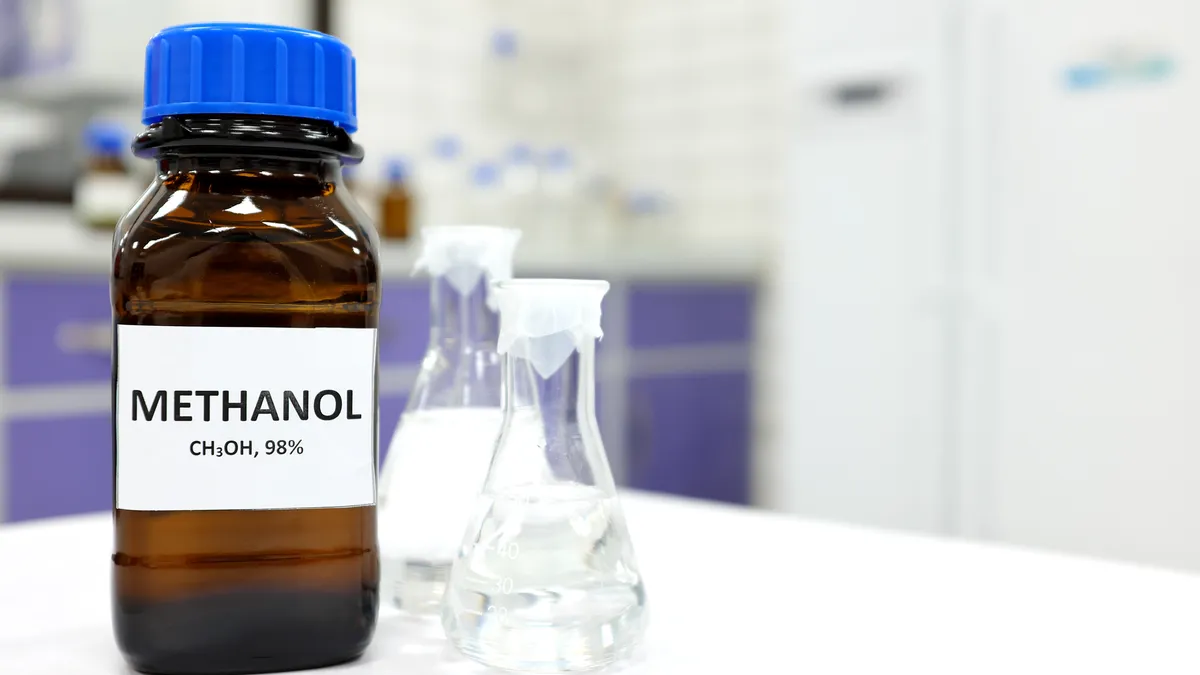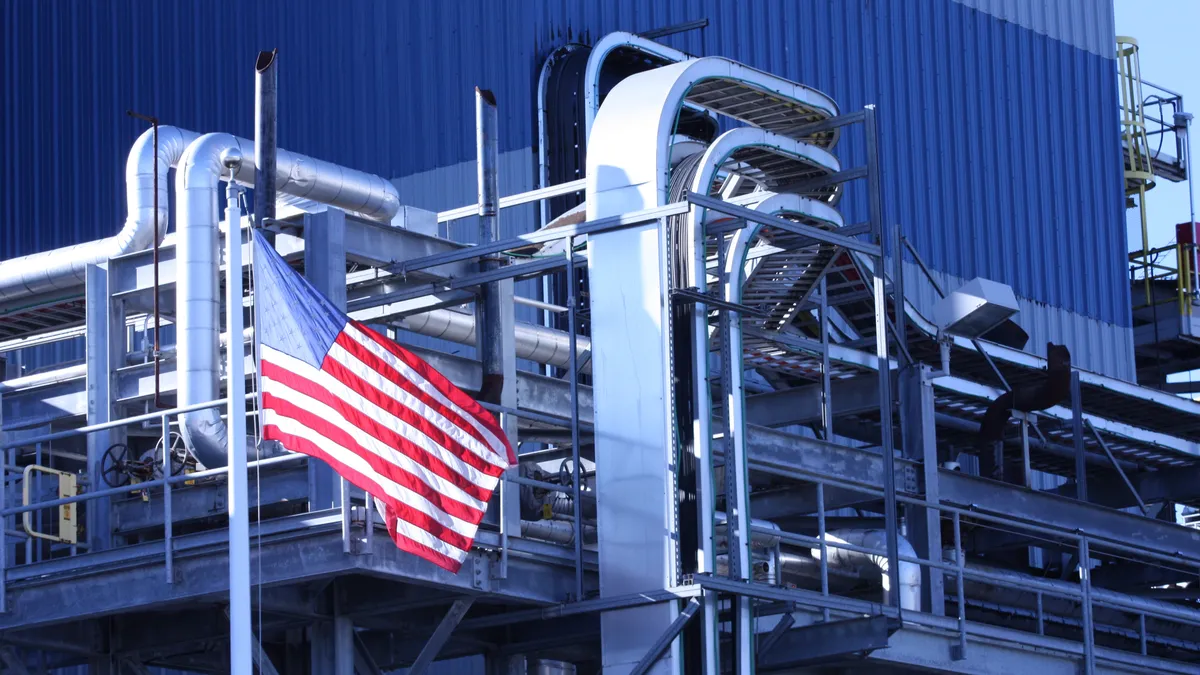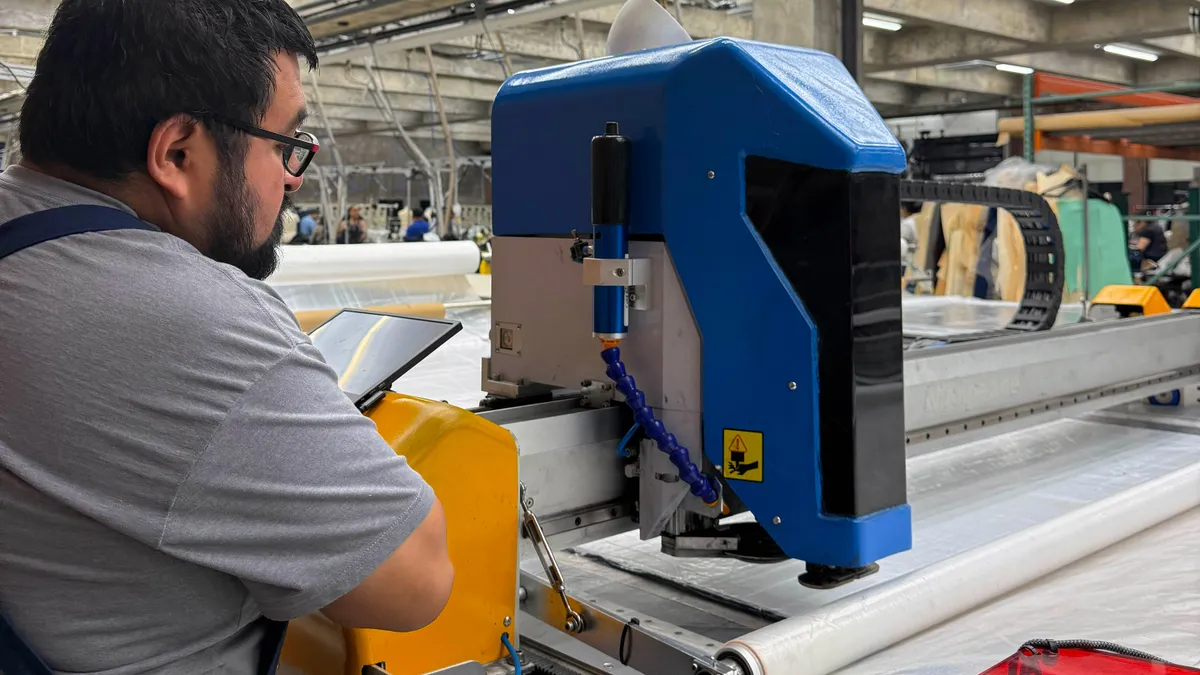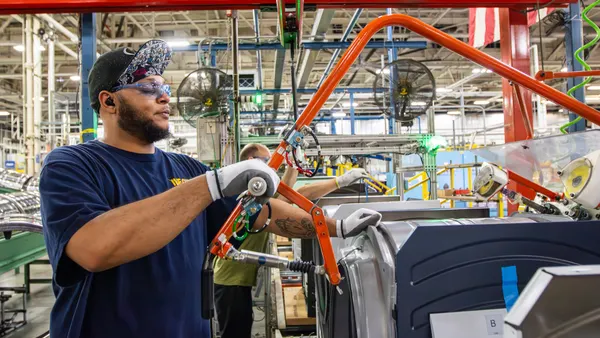Dive Brief:
- Lake Charles Methanol is planning to build a $3.24 billion chemical manufacturing facility at the Port of Lake Charles, Louisiana, the state’s economic development agency announced on Wednesday.
- The upcoming facility will produce 3.6 million tons of low-carbon or renewable methanol, as well as other chemicals.
- The plant is expected to create 728 jobs in the surrounding region, including 123 direct positions with an estimated average salary of $135,955. A final investment and construction start date is expected in mid-2024, with production slated to begin in late 2027.
Dive Insight:
Lake Charles will use auto thermal gas reforming technology and carbon capture to produce low-carbon hydrogen, which will be converted to methanol. The process will transform natural gas and renewable gas feedstocks into hydrogen, according to the release.
Lake Charles plans to work with a third party to capture and sequester about one million metric tons of carbon dioxide per year, but did not specify the partner it plans to work with.
Methanol is used to produce various products and materials, including plastics, coatings, automotive electronics, foam materials, inks, paint, adhesives, caulk and rubber tires.
The Lake Charles project is part of the chemical maker’s strategy to produce low-carbon methanol, dubbed “blue methanol” that leverages clean hydrogen and carbon capture processes to avoid the release of greenhouse gases.
“The project will deliver substantial tangible economic benefits to local communities while providing an environmentally beneficial blue methanol product to facilitate the transition to low-carbon chemicals and fuels,” LCM President and CEO Donald Maley said in a statement.
In addition to upcoming manufacturing positions, the project is expected to create up to 2,300 construction jobs.
The creation of the Lake Charles project has been several years in the making. In 2016, the Department of Energy committed up to $2 billion for the chemical maker’s low-carbon methanol facility. The funding was part of the department’s Advanced Fossil Energy Project, meant to boost domestic advanced fossil energy production that can reduce, avoid or separate greenhouse gases.














